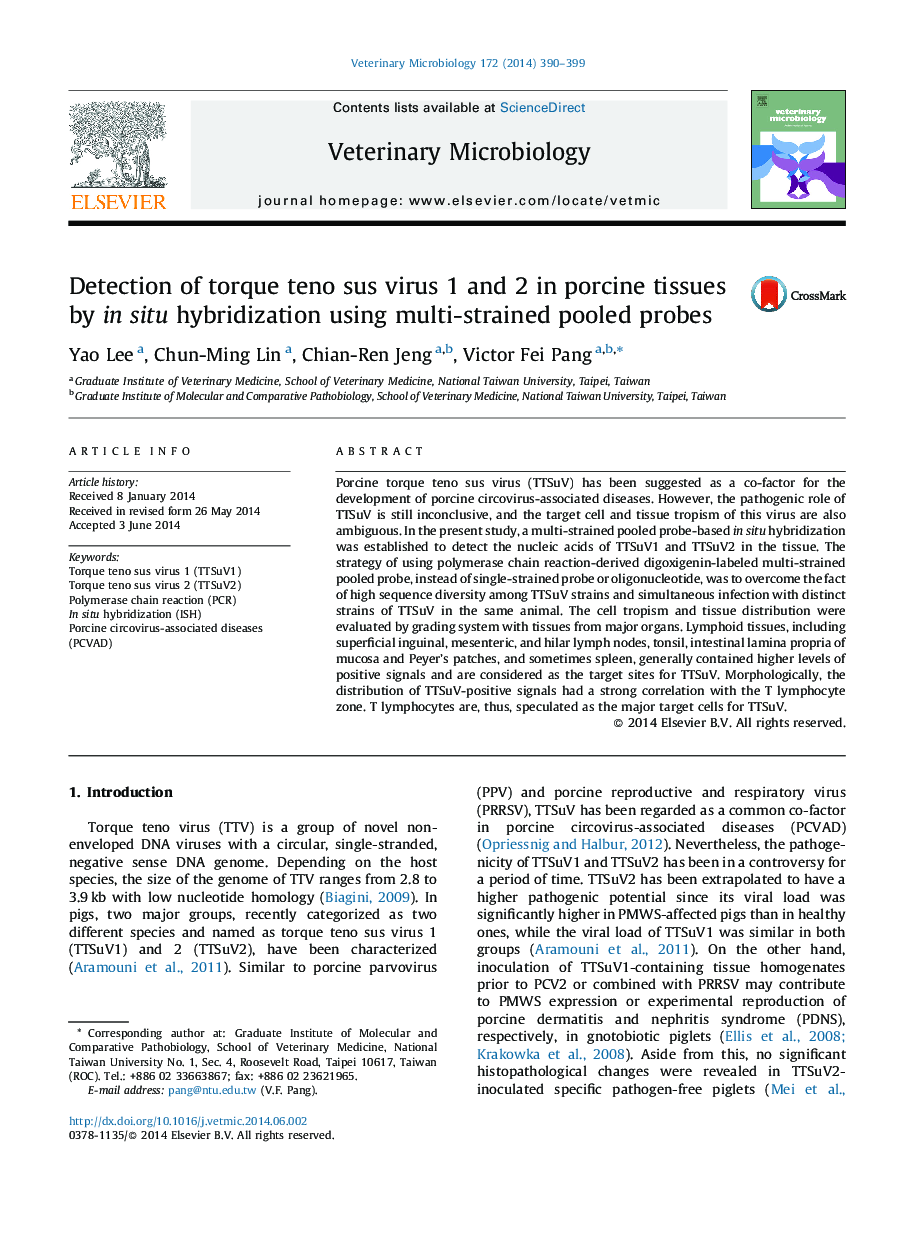| Article ID | Journal | Published Year | Pages | File Type |
|---|---|---|---|---|
| 5800608 | Veterinary Microbiology | 2014 | 10 Pages |
â¢Probes were designed to overcome the sequence overlap and diversity of TTSuV.â¢Multi-strained pooled probe increased the sensitivity of ISH for TTSuV detection.â¢The main target site of TTSuV is the lymphoid tissue.â¢The major target cell of TTSuV is the T lymphocyte.
Porcine torque teno sus virus (TTSuV) has been suggested as a co-factor for the development of porcine circovirus-associated diseases. However, the pathogenic role of TTSuV is still inconclusive, and the target cell and tissue tropism of this virus are also ambiguous. In the present study, a multi-strained pooled probe-based in situ hybridization was established to detect the nucleic acids of TTSuV1 and TTSuV2 in the tissue. The strategy of using polymerase chain reaction-derived digoxigenin-labeled multi-strained pooled probe, instead of single-strained probe or oligonucleotide, was to overcome the fact of high sequence diversity among TTSuV strains and simultaneous infection with distinct strains of TTSuV in the same animal. The cell tropism and tissue distribution were evaluated by grading system with tissues from major organs. Lymphoid tissues, including superficial inguinal, mesenteric, and hilar lymph nodes, tonsil, intestinal lamina propria of mucosa and Peyer's patches, and sometimes spleen, generally contained higher levels of positive signals and are considered as the target sites for TTSuV. Morphologically, the distribution of TTSuV-positive signals had a strong correlation with the T lymphocyte zone. T lymphocytes are, thus, speculated as the major target cells for TTSuV.
